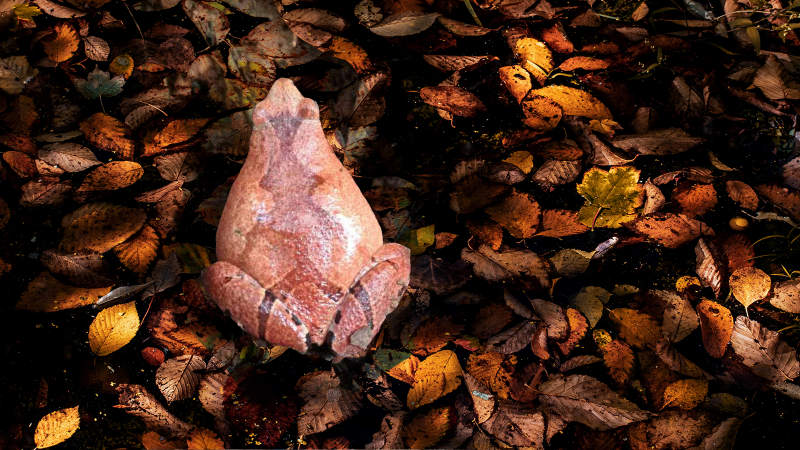
Microhyla ornata
Frogs are a common sight among paddy fields and other crops. They are suspected to be good biocontrol agents preying on insects like leafhopper that are common crop pests. These insects not only suck the sap of plants and reduce vigour but also act as carriers of viruses and other pathogens that cause diseases. Now a team of researchers from Ashoka Trust for Research in Ecology and the Environment (ATREE), Bengaluru, and Center for Ecological Studies, Indian Institute of Science, Bengaluru has surveyed the frogs among paddy fields and analyzed their diets. They have made a detailed analysis of the stomach contents of two frogs that provide evidence that indeed frogs do play an important role in protecting crops against insects. They also point out that the pesticides used indiscriminately may be limiting the diet choices of the frogs by killing some of the available insect species.
Agriculture has affected biodiversity in two ways- expansion that encroaches more and more land and intensification using fertilizers and other chemicals. Rice paddy fields are also sprayed with agrochemicals like pesticides, herbicides, and fertilizers. These chemicals affect the insect populations considerably, which are the main diet of frogs.
Frogs are a vital component of crop ecosystems since they eat away many insects that are also crop pests. However, their future is at stake as they are the most threatened species and their population is declining globally. Loss of habitat and usage of agrochemicals are two key problems acting in combination contributing to the decline of frog numbers.
In order to study the density of frogs and their diets in paddy fields, researchers surveyed paddy fields spotting frogs, collected them, and examined the stomach contents of two common frogs- Minervarya caperata and Microhyla ornata. Of the 60 paddy fields they surveyed, they came across 1705 frogs of six species. They then flushed the stomach contents of these two to yield 261 insects which were then classified.
“The key finding is that the two species, while found together, eat very different things,” says Dr Seshadri. M. carperata preferred a wide variety of insect prey like beetles, larvae and spiders compared to M. ornata. M.ornata on the other hand mostly preferred a class of insects belonging to wasps, ants, and termites. Several larvae/caterpillars, wasps and beetles are found to damage paddy crops. Researchers even found some plant materials and pebbles in the stomachs of these frogs. It is believed that these pebbles and stones might help frogs to break down hard-to-digest material like the carapace of insects.
“Ours is the first study to examine the diets of frogs in paddy fields and it opens up a whole lot of questions. For example, do frogs in pesticide-free agriculture areas consume a greater diversity of prey? ” asks Dr Seshadri.
Not only do the frogs choose and prey selectively over some insects than others but they may have different hunting strategies too. M. carperata having a form and colour that can merge with the background prefers to sit and wait for the prey to walk in, while M.ornata is more of a hunter and goes after the insects.
With this research, by finding that frogs actually have specific choices with what they prey upon, researchers call for a more rigorous study on the effect of pesticides on frogs and their access to diets. They claim that pesticides may reduce the types of insects available to frogs and therefore can affect the frog population. Several insects as mentioned earlier not only destroy the crops directly but also act as carriers of deadly viruses and bacteria that are harmful to crops. Like other insects, crop pest insects may develop resistance to pesticides, but these insects will be hard to escape from a biocontrol agent like a frog. These frogs consume pests and may actually offset the monetary and ecological cost of pesticide use and abuse. This puts a choice in front of us as to select an ecologically harmful pesticide or a biocontrol agent naturally designed by the food web to control our pests.
This article has been run past the researchers, whose work is covered, to ensure accuracy.






